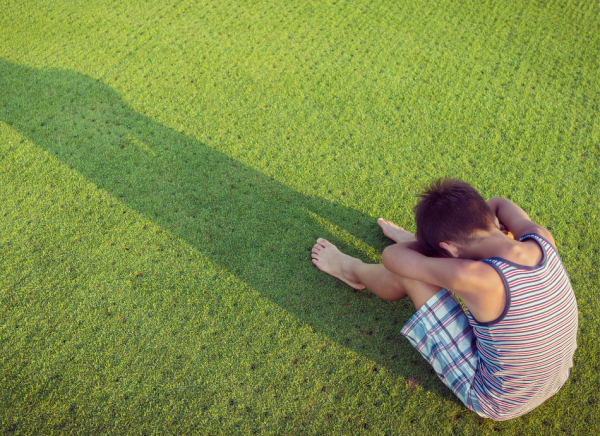Wishing everyone a safe and happy Christmas and New Year – Meri Kirihimete from the Healthify team.
Fainting
Key points about fainting
- Fainting, or syncope, is the loss of consciousness for a few seconds. It's also called passing out or blacking out.
- It affects about a third of the population at least once in their lives.
- Most people will only experience fainting once in their lifetime and it’s not generally a sign of a serious condition, but physical injury is a risk if you fall.
- If you feel faint, lie down or sit down and put your head between your knees. Don't get up too quickly afterwards.
- If you do faint, it’s important to tell your healthcare provider as there may be an avoidable or treatable reason for it.

Fainting is when you pass out, or lose consciousness for a few seconds. It's medical name is syncope. About 1 in 3 people will faint at some point in their lives. It's not generally a sign of anything worrying, but you may fall and hurt yourself if you faint.
You can faint for a number of different reasons, such as having low blood glucose levels, standing up too fast, being in severe pain or when seeing blood.
If you feel faint, sit down and put your head between your knees. Don't stand up too quickly afterwards.
Fainting happens when your brain doesn't get enough oxygen, causing you to pass out. Most people recover quickly.
Fainting is caused by reduced blood flow to the brain, often due to low blood pressure. After you lose consciousness (pass out) and fall or lie down, more blood can flow to your brain so you wake up again. Usually fainting happens for a reason, such as if you have been standing for a long time in a hot place, or if you're in pain.
Before you faint, you might experience a range of symptoms or warnings. These can include:
- looking pale
- feeling warm
- feeling light-headed, sick (nauseous) and sweaty
- experiencing a spinning sensation
- losing some or all of your vision
- having trouble hearing.
Some people know they are going to faint because they have these symptoms beforehand, this is known as pre-syncope.
As soon as you begin to feel faint, lie down and raise your feet so they’re higher than your head. If you can’t lie down, sit down and put your head between your knees. This will help to increase the flow of blood to your brain and may prevent you from fainting. Don't get up too quickly, and if you feel faint again, get back down. Get some fresh air.

Image credit: Canva
- Sit up slowly and take it easy for the rest of the day, you may feel tired for a while.
- Let somebody know that you’ve fainted so they can keep an eye on you and call for help if it happens again.
- Avoid strenuous exercise for a couple of days.
- Drink plenty of fluid to stay well hydrated.
- Avoid alcohol as it can lower your blood pressure.
- Keep taking your usual medicines unless you have been advised not to by your healthcare provider.
- Avoid hot baths or showers.
- Avoid taking sleeping tablets or sedatives unless advised by a healthcare provider.
Fainting can be due to a number of causes.
Vasovagal reflex
Most often, fainting is caused by the vasovagal reflex, where blood pools in the lower body and less blood, and oxygen, goes to the brain. This can be brought on by:
- stress or emotional distress
- pain, especially severe pain
- low blood glucose levels
- fear
- standing up too quickly
- standing for a very long time, especially in hot places and if you are dehydrated
- holding your breath
- seeing blood, having an injection or getting blood drawn.
In some situations, fainting may occur as a reflex response to specific triggers. These include:
- coughing, sneezing, laughing or swallowing
- straining when passing a bowel motion (pooing)
- urinating (for men standing up to wee)
- sudden abdominal pain
- eating a meal
- blowing a brass instrument
- lifting weights
- wearing a tight collar, twisting your neck hard or otherwise putting pressure on your carotid artery if you are older person.
Orthostatic hypotension
Fainting can also be caused by a drop in blood pressure when you stand up too fast. This is called orthostatic hypotension and is more common in older people. It can be made worse by:
- dehydration
- taking medicines that lower blood pressure, eg, diuretics
- some conditions, eg, Parkinson's disease.
More serious causes
In some cases, fainting may be caused by more serious medical problems such heart or lung problems, stroke, or epilepsy.
See your healthcare provider if you’ve had a fainting episode. To find the cause of your fainting, they will do a physical examination and ask questions about how and when you fainted. Depending on what the physical examination shows, your healthcare provider may want to do tests such as blood tests, ECG or EKG, heart checks, a tilt table test or a CT scan.
The following links provide further information on fainting. Be aware that websites from other countries may contain information that differs from New Zealand recommendations.
Fainting(external link) Healthy WA, Australia
Patient education – syncope (fainting)(external link) UpTo Date, US
Fainting & collapse(external link) Better Health Channel, Australia, 2010
Apps
References
- Syncope (fainting(external link)) Johns Hopkins, US
- Fainting(external link) Healthline, US, 2016
- Fainting(external link) Healthy WA, Australia
- Vasovagal syncope(external link) Mayo Clinic, US
Transient loss of consciousness (‘blackouts’) overview(external link) NICE Pathways, NZ, 2014
Syncope – risk stratification and clinical decision-making(external link) Emergency Medicine Practice, April 2014
Syncope and collapse – Te wheroku me te tanuku(external link) HQSC, NZ, 2019
Apps
Credits: Healthify editorial team. Healthify is brought to you by Health Navigator Charitable Trust.
Page last updated:





